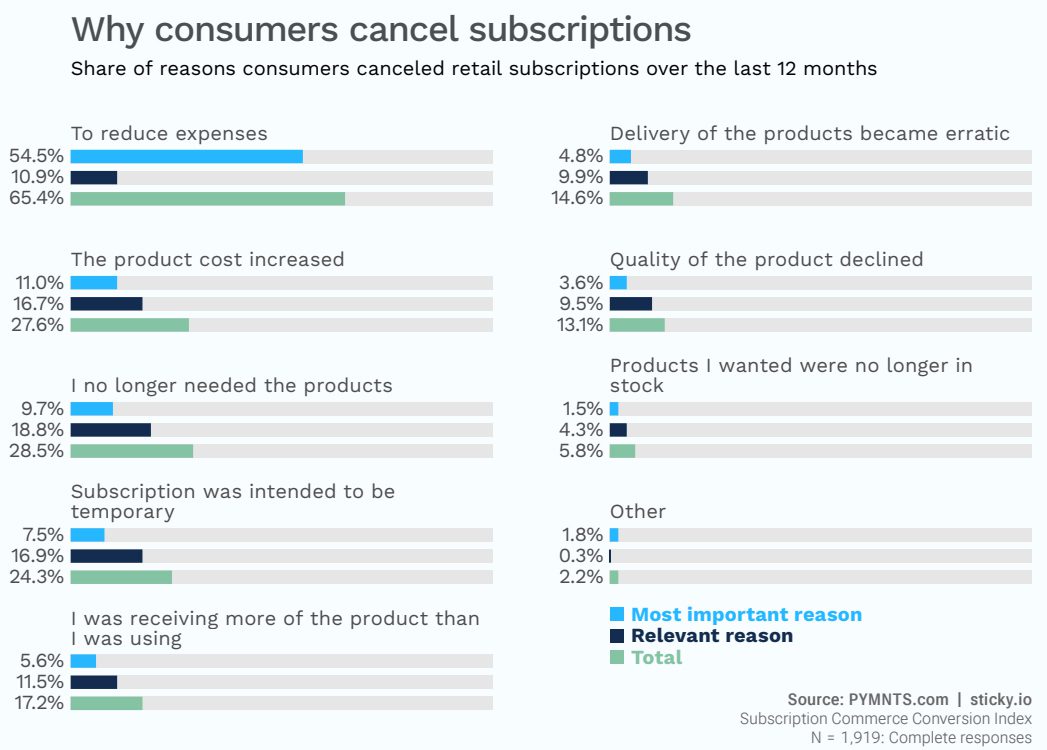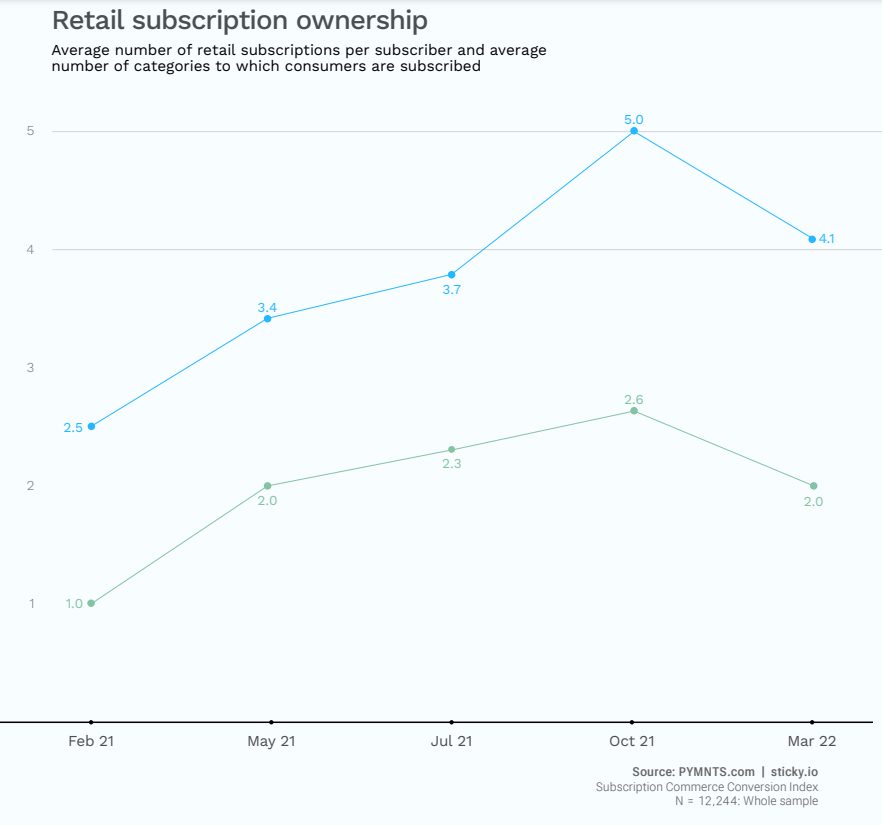How Brands Can Survive the Great Unsubscribe

Are good times over for subscription commerce? In a word: no. But there’s also no questioning that trimming of subscriptions — retail and streaming — is happening more now as even high earners begin reacting to inflation that’s cutting buying power and forcing hard choices.
How companies keep subscribers engaged is the big question for 2022 as they navigate the shoals of inflation, heavy subscription competition and that of reinvented in-store experiences.
In the subscription-happy economy of the past two years, homebound consumers turned to subscription offers in legions, signing up for numerous channels as Netflix competitors emerged, along with every imaginable consumer product, all personalized and delivered.
Now, with COVID pushed to the side and runaway prices the new enemy, consumers are scrutinizing subscriptions they’ve accumulated and deciding what stays and what goes.
As The Financial Times reported, “For consumers, the appeal was convenience or the ability to try new things, research-free. For companies, entrepreneurs, and venture capital investors that piled into the space, the pitch was a stickier, more direct relationship with customers that were supposedly not just less price-sensitive but also easier to upsell. That’s about to be tested.”
FT added that “Netflix is the canary for this squeeze” after losing some 200,000 subscribers in Q1 2022 and warning of more cancellations to come.
Streaming is faring better than its retail subscription box cousins. According to the latest Subscription Commerce Conversion Index, a PYMNTS and sticky.io collaboration and taken from a survey of over 1,900 U.S. consumers, the average subscriber has dropped one of their five retail subscriptions since October, putting hard data behind “The Great Unsubscribe.”
And with 71% of consumers reporting inflationary impacts on grocery spending, nearly eight in 10 (78%) of consumers with retail subscriptions report rising price sensitivity there as well.
Showing how looming inflation is dampening the undeniable popularity of retail direct-to-consumer and streaming offers, the latest Subscription Commerce Conversion Index notes that “The share of nonsubscribers citing cost as the most important reason why they did not enroll with a retail subscription service skyrocketed from 2% in October 2021 to 22% in March 2022.”
 Get the study: Subscription Commerce Conversion Index
Get the study: Subscription Commerce Conversion Index
The ‘Why’ Behind Decluttering
As various sources now validate trends the Subscription Commerce Conversion Index has been tracking since 2021, MarketWatch reported on Sunday (June 5) that “for the first time in the past year, middle-income consumers — with a yearly income of $40,000 to $80,000 — recently overtook low-income shoppers as the group most affected by rising grocery prices.”
As inflationary effects creep up and cause belt-tightening among higher earners, we’re seeing curious patterns forming as D2C commerce shapeshifts to align with consumer sentiment.
For example, as consumers look at cutting certain subscriptions due to cost, they’re simultaneously eyeing others as a method of saving time — a tactic that more providers are sure to test as competition heats up within specific categories of retail subscription boxes.
Per the Index, “consumers see D2C subscriptions as a remedy for rising costs and user experience issues with other subscription providers. A far greater share of consumers who have experienced limited product availability with a subscription tend to seek out D2C subscriptions (55%) over mass-market merchant subscriptions (22%).”
The same pattern holds true for consumers who have encountered erratic deliveries: 52% of consumers turn to D2C subscriptions, whereas just 21% look to mass-market merchants.”
The move to using D2C subscriptions to get the best of both experience and value will likely focus on tighter personalization, enhanced selection and presumably special discounts.
Get the study: Subscription Commerce Conversion Index
Time is Money
A saving grace for subscriptions is the effort they conserve for busy consumers. That time and toil have a value that consumers often prize above cost.
Convenience consistently outranks cost in our Index as a prime driver of subscription uptake.
The May Subscription Commerce Conversion Index notes that “Subscribers have redefined convenience as the ability to ensure that their needs are met in the moment, preventing them from wasting time on a product or service that does not meet their standards or expectations.”
Features that add value are being employed more to keep the retail subscription magic alive, as subscribers have “redefined convenience as the ability to ensure that their needs are met in the moment, preventing them from wasting time on a product or service that does not meet their standards or expectations.”
Finding that 17% of consumers canceled subscriptions because of services supplied to them and 28% said that they weren’t interested in the product-service anymore, the Index notes that “both issues might be addressed through the introduction of a simple recommendation engine or plugin or by offering subscribers the option to customize delivery amounts with each order based on their needs.”

Download Yours: Subscription Commerce Conversion Index
